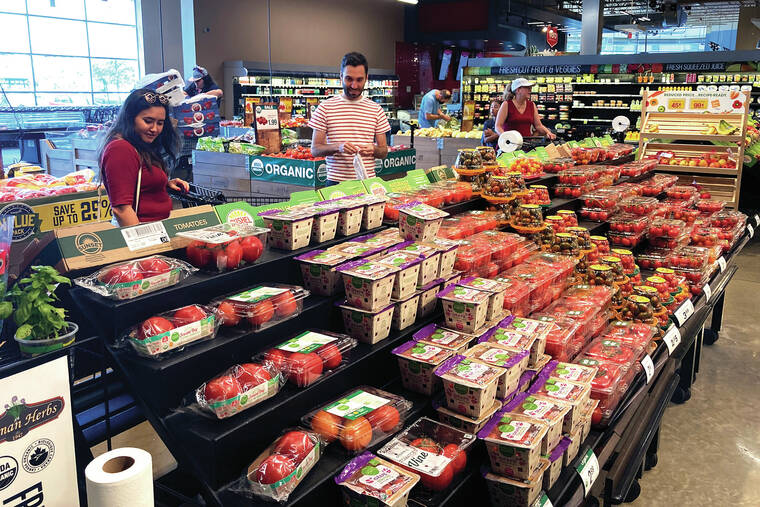Demand for grocery delivery cools as food costs rise
Karen Raschke, a retired attorney in New York, started getting her groceries delivered early in the pandemic. Each delivery cost $30 in fees and tips, but it was worth it to avoid the store.
Then earlier this spring, Raschke learned her rent was increasing by $617 per month. Delivery was one of the first things she cut from her budget. Now, the 75-year-old walks four blocks to the grocery several times a week. She only uses delivery on rare occasions, like a recent heat wave.
ADVERTISING
“To do it every week is not sustainable,” she said.
Raschke isn’t alone. U.S. demand for grocery delivery is cooling as prices for food and other necessities rise. Some are shifting to pickup — a less expensive alternative where shoppers pull up curbside or go into the store to collect their already-bagged groceries — while others say they’re comfortable doing the shopping themselves.
Grocery delivery saw tremendous growth during the first year of the pandemic. In August 2019 — a typical pre-pandemic month — Americans spent $500 million on grocery delivery. By June 2020, it had ballooned to a $3.4 billion business, according to Brick Meets Click, a market research company.
Companies rushed to fill that demand. DoorDash and Uber Eats began offering grocery delivery. Kroger — the nation’s largest grocer — opened automated warehouses to fulfill delivery orders. Amazon opened a handful of Amazon Fresh groceries, which provide free delivery to Prime members. Hyper-fast grocery delivery companies like Jokr and Buyk expanded into U.S. cities.
But as the pandemic eased, demand softened. In June 2022, Americans spent $2.5 billion on grocery delivery — down 26% from 2020. For comparison, they spent $3.4 billion on grocery pickup, which saw demand drop 10.5% from its pandemic highs.
That’s causing some turmoil in the industry. Buyk filed for bankruptcy in March; Jokr pulled out of the U.S. in June. Instacart — the U.S. market leader in grocery delivery — slashed its own valuation by 40% to $24 billion in March ahead of a potential IPO. Kroger said its digital sales dropped 6% in the first quarter of this year.
Some think delivery demand could drop further. Chase Design, a consulting firm, says its surveys show the number of U.S. shoppers who plan to use grocery delivery “all the time” has fallen by half since 2021.
Cost is the biggest reason. Peter Cloutier, the growth and commercial strategy lead at Chase Design, said it’s difficult to get groceries to a customer’s door for less than a $10 premium, which covers labor and transportation.
Consider a basket of eight staples from Target, including a gallon of milk, a dozen eggs and a pound of ground beef. In store, the order would ring up at $35.12. Target offers curbside pickup for free. Delivery costs $9.99, not including a tip.


